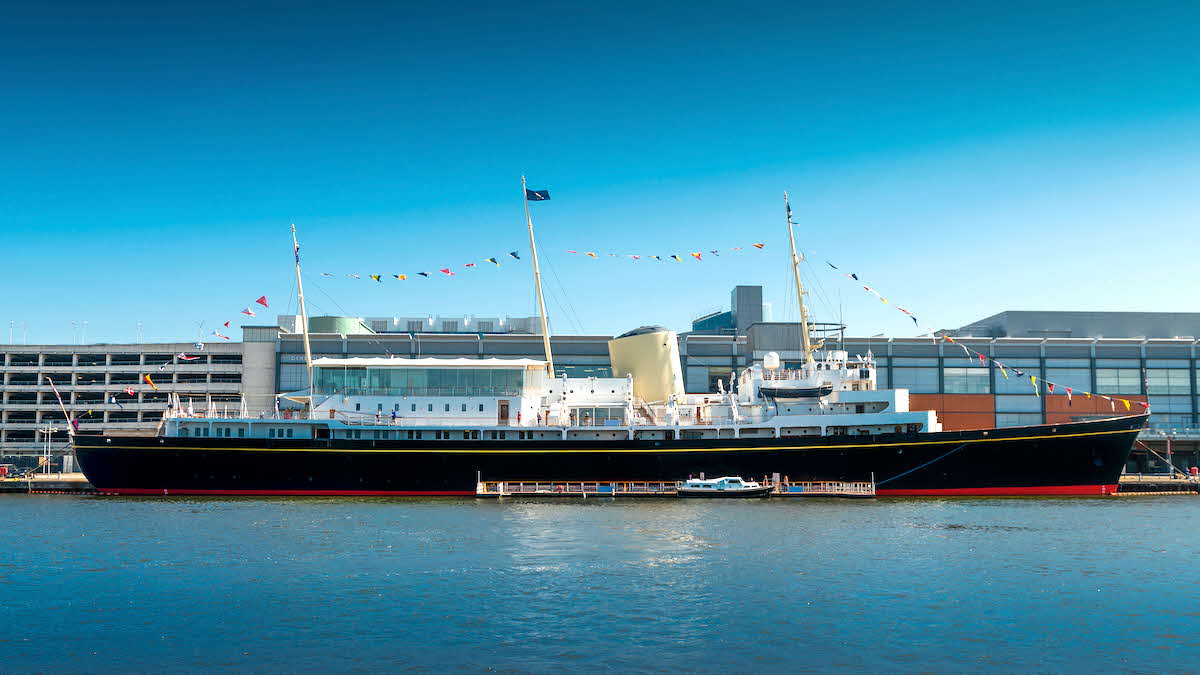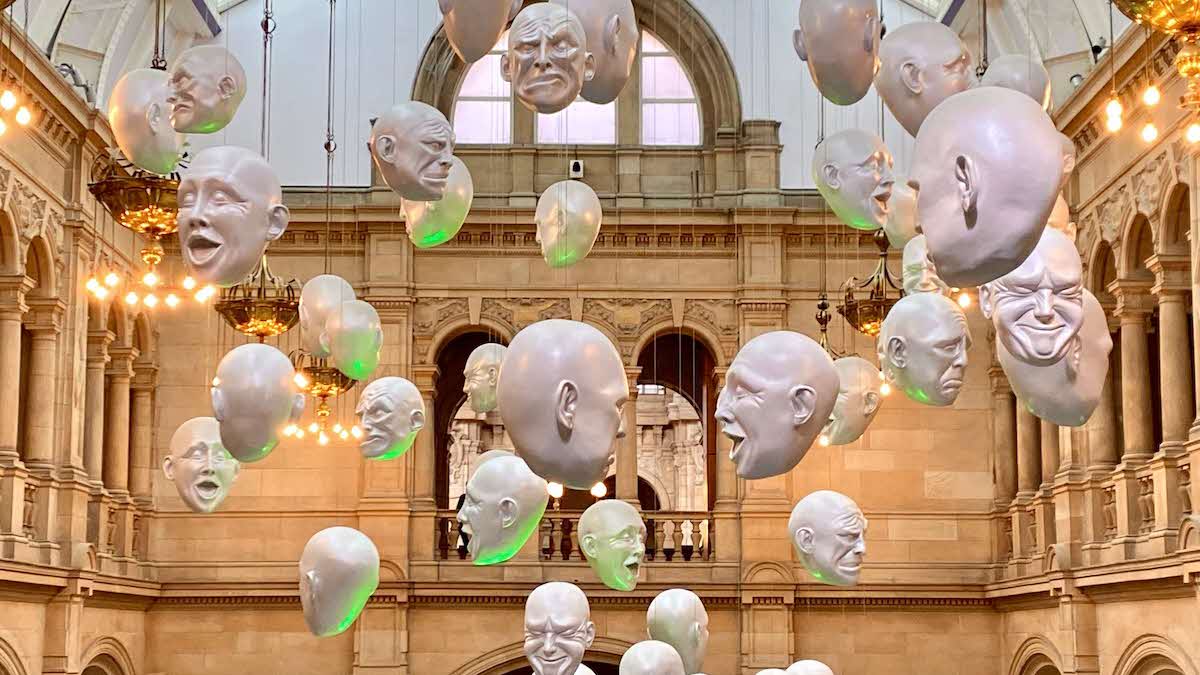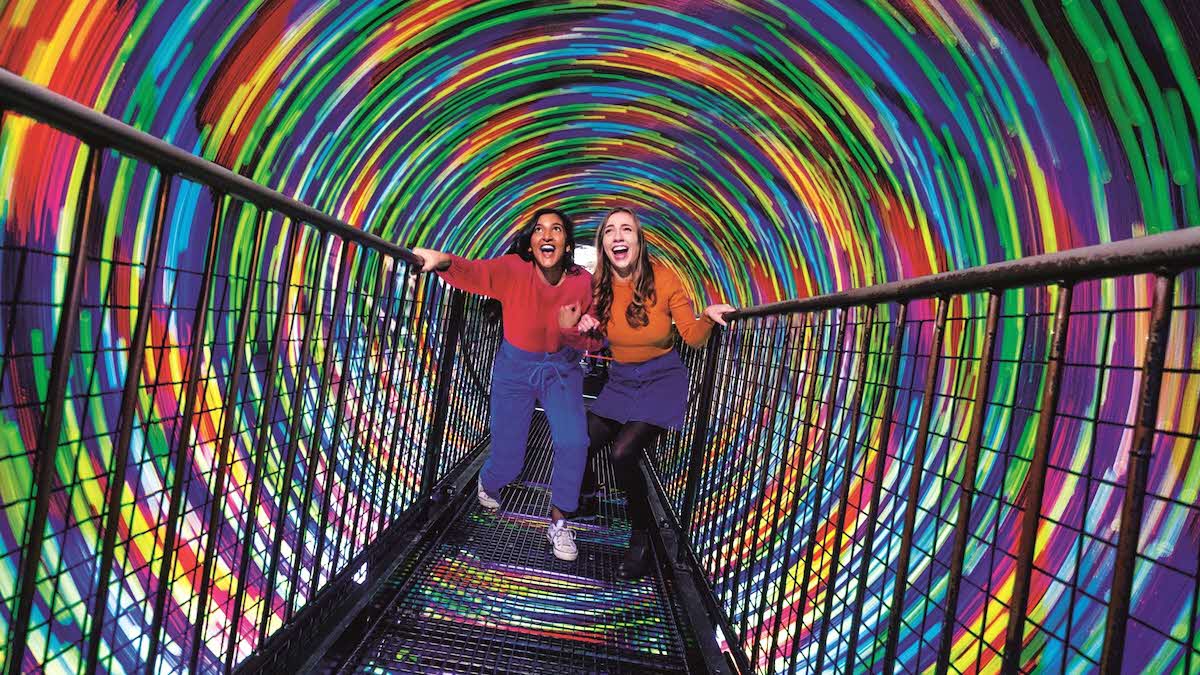Scottish tours
Explore Scotland at your own pace with one of our fantastic Scottish touring itineraries
View all itinerariesStuart Egan and family enjoy cultural and historical adventures during a short tour across Scotland’s central belt
 The Royal Yacht Britannia. Image copyright Marc Millar
The Royal Yacht Britannia. Image copyright Marc Millar
An organist plays the opening bars of John Williams’ famous Star Wars theme to a rapt crowd. Elsewhere, a toddler gazes up in awe at the trunk of Sir Roger, a taxidermied Asian elephant. Just beyond, with her head tilted at an extreme angle, a woman is captivated by the intricate cedar wood carvings of a totem pole.
That may sound like a dream caused by eating far too much Red Leicester, but it is just a typical scene inside Glasgow’s Kelvingrove Art Gallery and Museum. This eclectic, artwork- and artefact-stuffed building was the first port of call on our family’s week-long tour taking in as many civic museums and galleries across the cities of Glasgow and Edinburgh as possible, and it was a fantastic place to begin.
If you’d like to visit Glasgow, Strathclyde Country Park Club Campsite is around 12 miles south-east of the city centre (driving in by car was easy enough, but site staff can advise on public transport options if needed).
There’s plenty to enjoy near to the Club site – not least the pleasures of M&D’s Scotland’s Theme Park, which is just a 15-minute walk from your pitch – but the delights of Glasgow should not be missed. Here, a number of fascinating attractions tell the stories of Glaswegians past and present, as well as Scotland’s wider history.
 Floating Heads by Sophie Cave at the Kelvingrove
Floating Heads by Sophie Cave at the Kelvingrove
The Kelvingrove is operated by the charity Glasgow Life, which is also responsible for several other similar venues in the city.
A grand building on the edge of the delightful Kelvingrove Park, its themed rooms cover subjects as diverse as Scotland’s wildlife, the influential group of artists known as The Glasgow Boys, Ancient Egypt and much, much more. The organ mentioned above overlooks the large, central hall, and free recitals (as well as tours covering the huge instrument) are held regularly; check glasgowlife.org.uk in advance to avoid disappointment.
If you’re watching your budget, it’s worth bearing in mind that all of the Glasgow Life museums and galleries are free to enter (donations are appreciated), as well as being easy to get to on public transport. Although we didn’t make it around all of them, we probably saved a packet, even taking into account a few visits to their cafes and restaurants.
On our second day we made a beeline for the People’s Palace on Glasgow Green, in the east end of the city. This museum concentrates on the lives of Glaswegians and rivals The Kelvingrove in its broadness. I enjoyed viewing everyday household objects from the past, but my kids were more intrigued by Billy Connolly’s oversize pair of yellow banana boots, which ‘The Big Yin’ famously used to wear on stage. Elsewhere, a corner is devoted to Glasgow’s Barrowland Ballroom – little ones can dress up in 1950s-style polka dot dresses – while another nook details life in the old wash houses and public baths. The People’s Palace is now undergoing extensive refurbishment and will reopen in 2027 – it is definitely worth bearing in mind for the future!
We pressed on, spending an hour or so at the Gallery of Modern Art, where the traffic cone-sporting statue of the Duke of Wellington on horseback outside draws plenty of second glances. Inside, permanent and temporary exhibits occupy the bright, airy rooms.
Our last day in Glasgow included a visit to the Riverside Museum, where the city’s transport heritage is celebrated in a striking building next to the Clyde. Designed by the acclaimed architect Dame Zaha Hadid, this sprawling space contains reconstructions of old shops as well as displays of cars, bicycles, trams, motorbikes, locomotives and more... there’s even a spot for the much-maligned Sinclair C5! Club members might cast admiring glances towards the late show promoter John Carter’s caravan, which features plush, bespoke fixtures and fittings – it would certainly stand out among the more modern tourers at Strathclyde Country Park.
 Camera Obscura and World of Illusions, Edinburgh
Camera Obscura and World of Illusions, Edinburgh
After three packed days in Glasgow it was time to move on to Scotland’s capital, where scores of fellow tourists clog the streets around the Royal Mile and the castle. The sun was shining, but we persevered with museums and galleries, booking a morning slot at the Camera Obscura and World of Illusions (camera-obscura.co.uk).
This is supposed to be ‘one for the kids’, but there were plenty of adults inside who were more than happy to pose in front of a carnival mirror or two. There are several floors filled with illusions, while at the top there is a fun demonstration of a 'camera obscura’. Popular in Victorian times, it uses pinhole camera technology and mirrors to project images of the city outside onto a table.
After lunch, we spent several hours in the sprawling, free-to-enter National Museum of Scotland (nms.ac.uk), which features treasures old and new – look out for the intricately carved Lewis chess pieces as well as Dolly the sheep, the first cloned mammal to be created from an adult cell.
Part of the appeal of museums like this is the sheer range of items that can be viewed. One minute you’re admiring a big Lego model of the very room that you happen to be standing in, the next you’re taking in the tartan designs of fashion icons Jean-Paul Gaultier and Alexander McQueen. But there’s a danger that it can be overwhelming, and we left this incredible place exhausted, trying to process everything that we had just seen – having explored barely half of it!
After a good night’s rest, we were raring to go again, but I wasn’t sure how receptive my kids – ages seven and four – would be to the Museum on the Mound (museumonthemound.com). Set in the historic head office of the Bank of Scotland, this museum of money might sound as dry as an old one pound note, but it is as entertaining as it is informative. We tried safe-cracking, fashioning our own coins (part of a special school holidays event), and even clapped eyes on a million pounds for the first – and probably last – time.
We had one more afternoon of sightseeing to fit in, and the Royal Yacht Britannia (royalyachtbritannia.co.uk) proved to be another hit. Club members can save 10% on the cost of admission to this floating attraction thanks to the Great Savings Guide (see camc.com/greatsavingsguide), but it is very popular, so make sure you book well in advance.
The yacht was in service for 43 years, until 1997, but is now berthed at the port of Leith. The fascinating tour details life aboard the ship for the royal family, their guests, servants and crew. The state rooms are an amazing sight to behold, but it’s the quarters of the Royal Navy officers – think bunk beds, overhead lockers, etc – that will probably resonate the most with many leisure vehicle owners.
Naturally we managed to see more of Glasgow and Edinburgh than just museums and galleries, but they proved to be a great focus and there were many more that we would have liked to have visited... but that’s a good excuse for another trip.
Visit these campsites to enjoy the museums mentioned in this article (please check opening dates)
A selection of other museums to visit across Scotland’s central belt (please check attraction opening dates and times)...